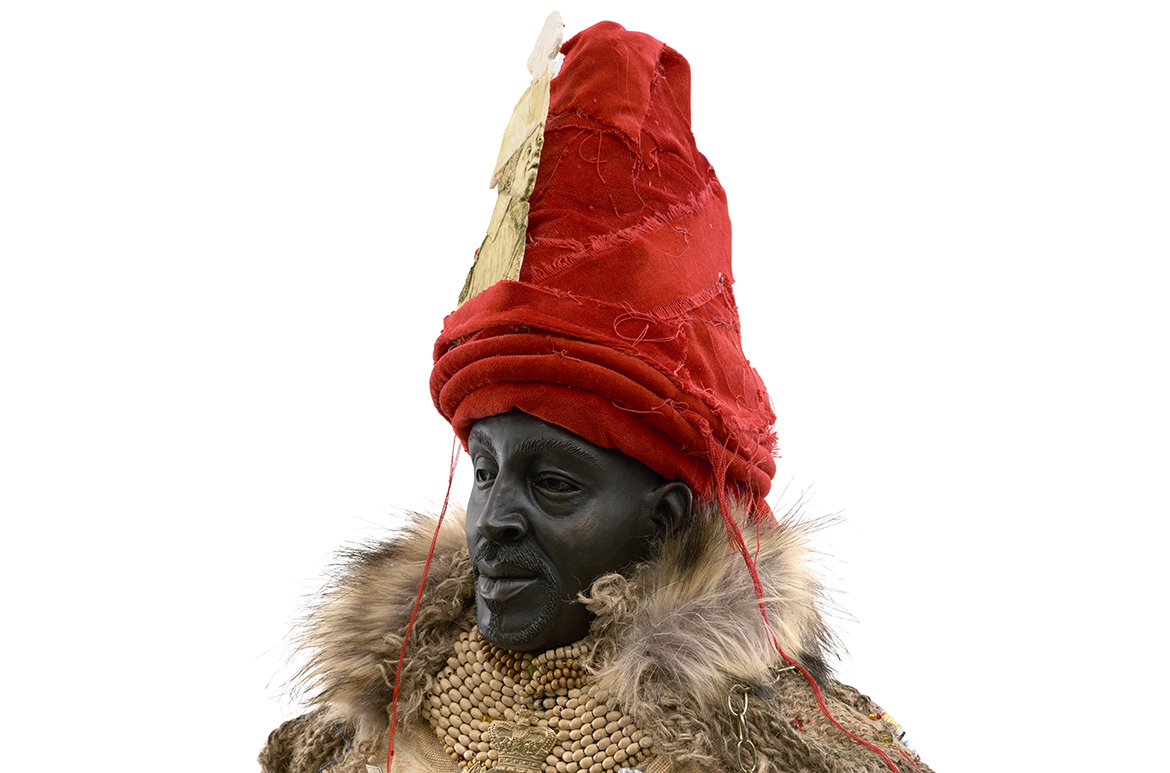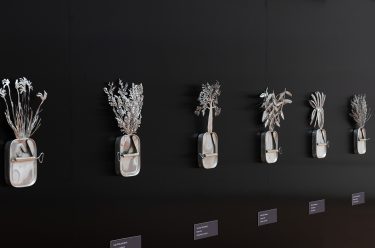Sitting astride a black horse decorated with beading, crochet, skulls and flea-market finds, a red-turbaned figure stands at a crossroad of histories, cultures and materials. Ambassador 2 (illustrated), acquired with funds from Tim Fairfax AC, comes to the Gallery from celebrated British artist Hew Locke’s series of equestrian statues adorned with symbols of regality and rebellion.
Locke has described these works as horsemen of the apocalypse, envoys either ‘from an Empire that has been and gone, or one that is yet to come’.1 At roughly a third of life-size, they draw on the visual language of the bronze equestrian statues that traditionally grace public squares and other civic spaces, yet are richly ornamented by the artist with military medals, royal insignia and other colonial paraphernalia to the point where both man and horse seem literally weighed down by the burden of history.
Hew Locke ‘Ambassador 2’ 2021
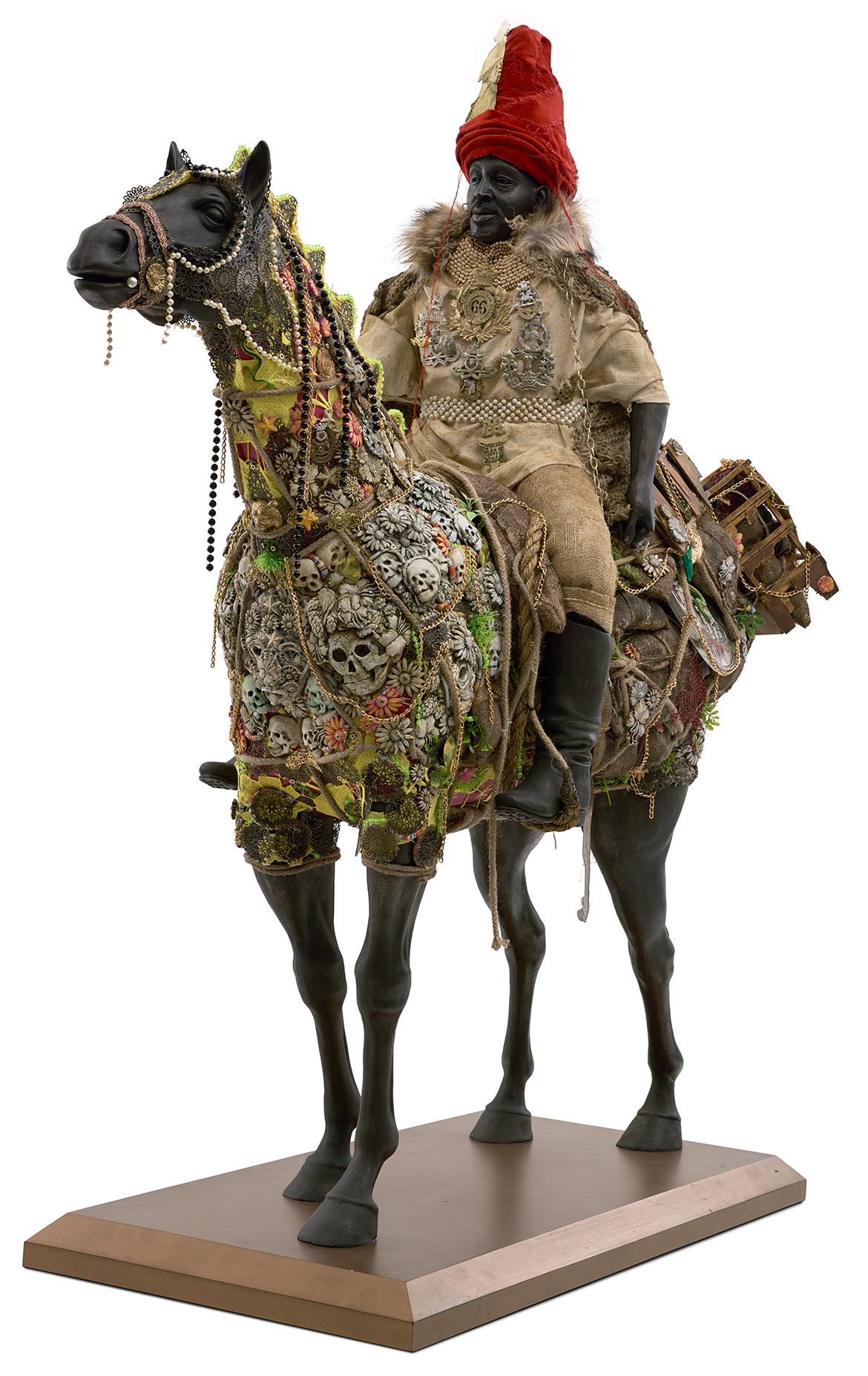
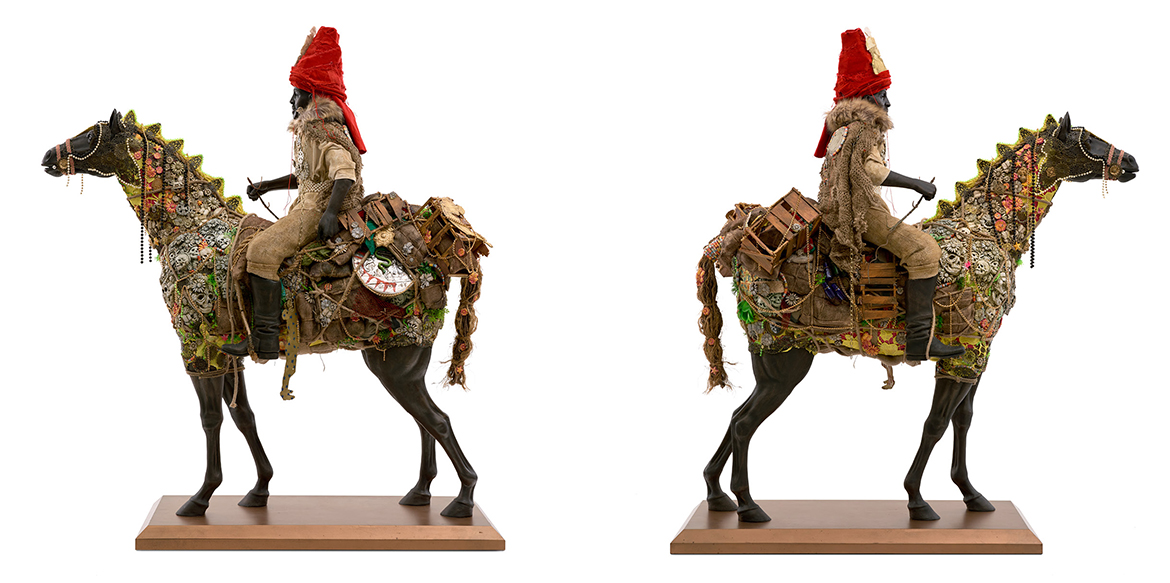
In the ‘Ambassadors’, Locke seeks to decolonise the tradition of commemorative monuments by inserting people of colour. As he notes, ‘There are very few people of colour as statues in this country, or in Europe. So that’s where I’m coming from. I’m making the decisions, and I’m deciding to address that’.2 The artist leaves it deliberately unclear as to whether these figures are real or imaginary, instead encouraging speculation on which civilisation — past, present or future — they may come from. He speaks about how his ‘Ambassadors’ move beyond statues to encompass something mythic:
They’re bronze equestrian figures of Black people. But they became something more than that: survivors, on horseback, in a dystopian, burnt-out landscape, heading to the future. What that future is, who knows? Carrying their history with them, that is what it becomes about. Within that context, they are carrying all kinds of colonial history.3
Ambassador 2 is a highly textured and intensely worked sculpture, possessing a rich materiality which Locke works meticulously to create. There are worlds of nuance and complexity to be found in the deliberate mix of colonial and postcolonial symbols, and the juxtaposition of revered insignia alongside what Locke describes as ‘cheap tat’.4 The central motif on the red turban, for example, is a bust of the Haitian revolutionary Toussaint L’Ouverture, while in his backpack is a large badge taken from a medal of the Second Anglo-Afghan War in the late nineteenth century.
‘Ambassador 2’ details
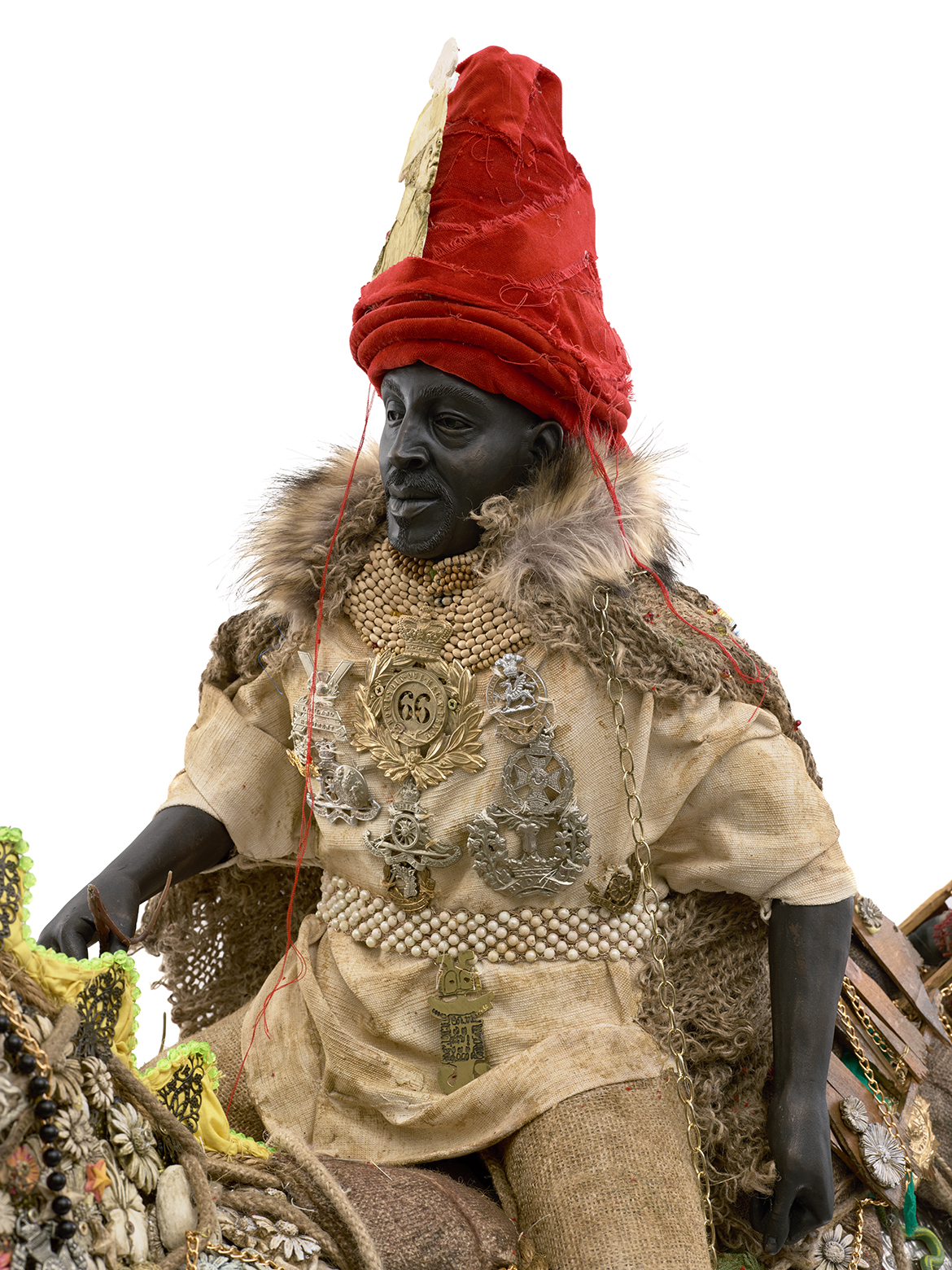

The use of found objects, antiques and other curiosities has been a consistent signature of Locke’s work for many years — a language he draws on for his ongoing exploration of colonial legacies and the critique of Empire. Colonial pins, six-guns, slave pennies, Benin bronzes, portraits of revolutionaries, and other symbols of justice represent an ongoing attempt by the artist to understand the complexities and contradictions of his heritage, and to convey a layering of time, history and culture. As Locke explains: ‘I’m British, but I’m also Guyanese, so it’s complicated. I hold them both in me at the same time . . . I come with a complex idea of identity and race’.5
The ‘Ambassadors’ grew out of another proposal for an equestrian statue, Sikander, that Locke developed for the celebrated Fourth Plinth commission in London’s Trafalgar Square in 2010 (he was shortlisted but didn’t win). It would be a decade before Locke revived the idea, prompted by the widespread protests around the world which sought to topple statues of historical figures — many of whom were slave-owners or empire builders — whose legacy is being reappraised against today’s moral standards. It’s important to note that Locke disagrees with the desecration of these monuments. Instead, he seeks a more creative and productive response by introducing people of colour into narratives from which they’ve been omitted historically and by richly dressing these statues in ways that reveal the contradictions of their histories but also celebrate the unique merging of cultural influences.
Locke’s works also frequently make use of humour and satire to reflect on the cycles of history, and the ebb and flow of cultures, people, finance and power. As the artist comments: ‘It’s about the vagaries of history, the spirals of history, things going out and coming back in again’.6 Works like Ambassador 2 have a particular charge in the current moment, especially for former British colonies like Guyana and Australia, with debates about the monarchy and its legacy resurfacing with the passing of Queen Elizabeth II. At the same time, there’s something uncomfortable about our inability to place these ambassadors historically — there’s a sense in which they are emerging from the shadow of colonialism to unsettle the narratives of the past.
Nina Miall is Curator, International Art, QAGOMA
Endnotes
1, 2 & 4 ‘In The Black Fantastic: Hew Locke’ [blog], Southbank Centre, London, 24 November 2022, https://www.southbankcentre.co.uk/blog/videos/in-the-black-fantastic-hew-locke accessed February 2023.
3 ‘Hew Locke: A World Before the World We Know’, Art Papers, 25 November 2022, https://www.artpapers.org/hew-locke-cosmo-whyte-interview/accessed February 2023.
5 & 6 ‘Movement is Everything’, Hew Locke in conversation with curator Elena Crippa, Tate etc, no.54, 2022, pp.46–7.
#QAGOMA
